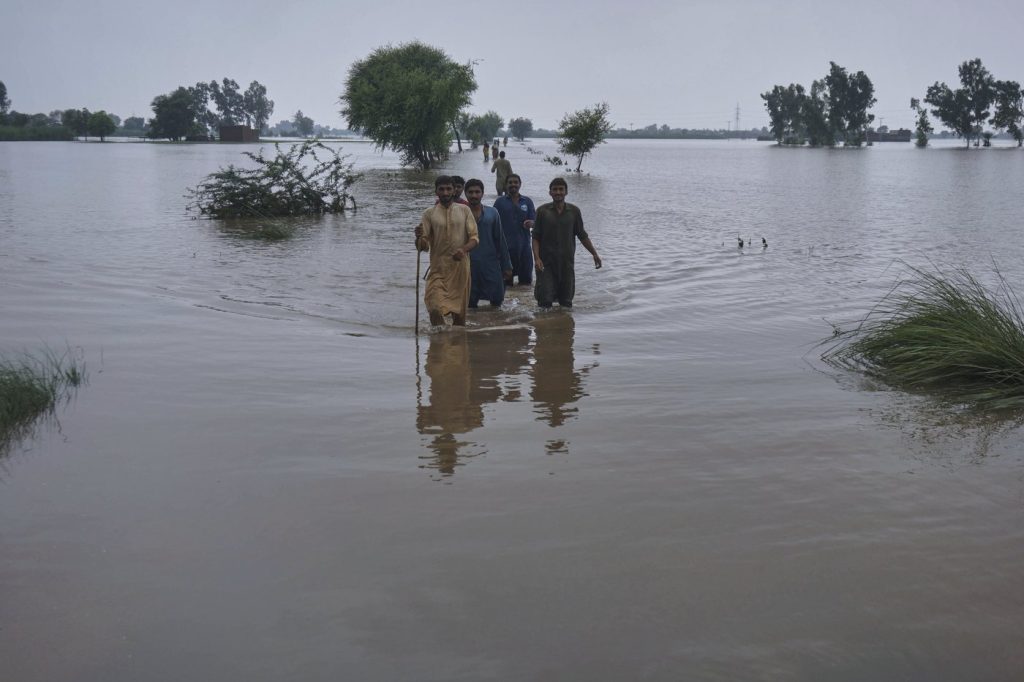LAHORE, Pakistan (AP) - Pakistan's eastern Punjab province is facing its most severe flood in history, according to a senior official's announcement on Sunday. The water levels in major rivers have reached unprecedented heights, exacerbating the crisis.
This year, global warming has intensified the monsoon season in Pakistan, a country that is particularly vulnerable to the effects of climate change. Heavy downpours and instances of cloudbursts have resulted in flash floods and landslides, affecting mountainous regions in the north and northwest. Eastern Punjab has also seen significant rainfall, along with cross-border flooding caused by India releasing water from swollen rivers and dams into low-lying areas of Pakistan.
Maryam Aurangzeb, the senior minister for Punjab, revealed at a press conference that approximately two million people have been affected by this catastrophic flooding. She noted that it is unprecedented for the Sutlej, Chenab, and Ravi rivers to carry such high volumes of water simultaneously. Local authorities are repurposing schools, police stations, and security facilities into rescue camps and are evacuating residents, even utilizing boats for assistance.
Aurangzeb also mentioned that the Foreign Ministry is gathering information regarding India's deliberate release of water into Pakistan, though there has been no immediate response from India. Last week, India had warned Pakistan about the impending risk of cross-border flooding, marking the first diplomatic communication between the two nations since a near-conflict incident in May.
Punjab is home to approximately 150 million people and plays a crucial role in Pakistan's agricultural sector, serving as the country's primary wheat producer. The devastating floods of 2022 had already destroyed vast areas of crops in the eastern and southern parts of the country. In light of these ongoing floods, Prime Minister Shehbaz Sharif expressed concerns about potential food shortages in Pakistan. Data from the national weather center indicates that Punjab has experienced 26.5% more monsoon rain from July 1 to August 27 this year, in comparison to the same period last year.
According to the national disaster management authority, rain-related incidents since June 26 have resulted in the deaths of 849 individuals and left 1,130 injured across the country. Pakistan's monsoon season typically extends through the end of September, heightening fears of further complications if conditions do not improve.
As the crisis unfolds, the full impact on the population and the agricultural sector is yet to be determined, but the signs point to a potentially catastrophic situation for millions in the affected regions.










